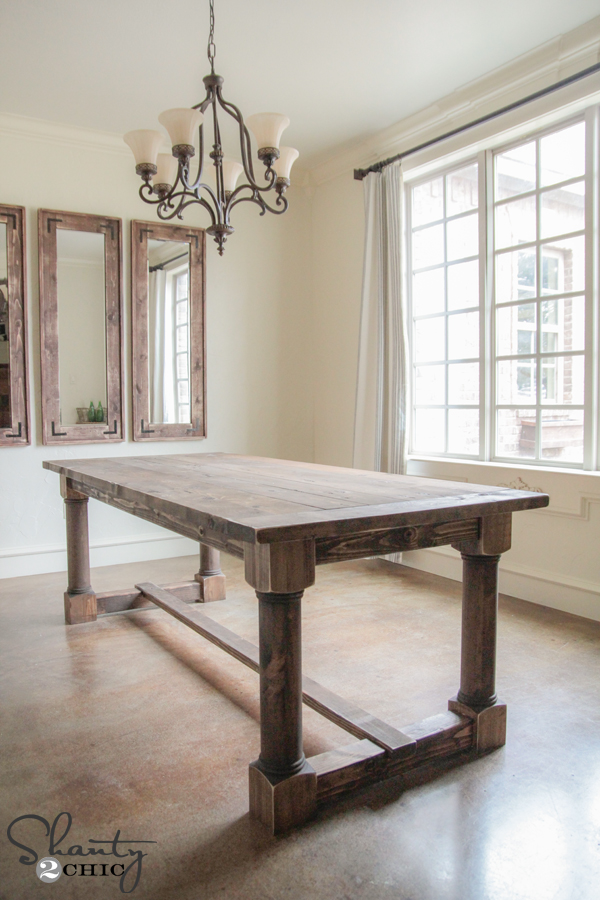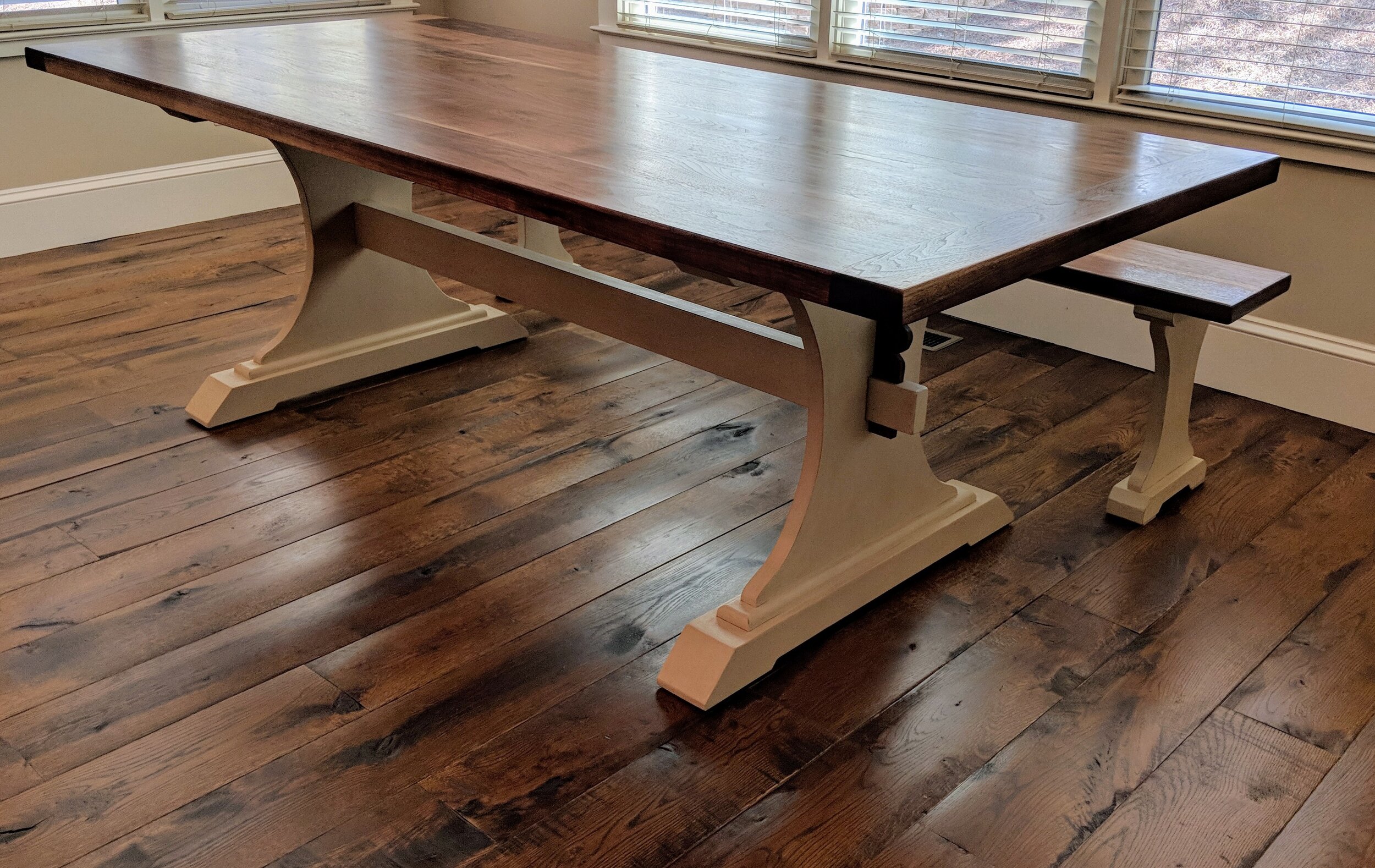How Dining Room Table Legs Can Change the Entire Aesthetic of Your Room
How to Select the Perfect Dining Area Table Legs for Your Home Design
Picking the excellent dining area table legs is a nuanced process that needs mindful factor to consider of different components, including your room restraints, aesthetic preferences, and useful requirements. The interplay between measurements, products, and styles can substantially affect the setting of your dining area, making it important to approach this choice systematically. As you ponder the myriad options readily available, it comes to be clear that the best choice expands beyond mere appearance; it can enhance your total eating experience. What factors should you focus on to guarantee your option complements your home's distinct personality?
Assess Your Eating Room
Examining your eating room is essential for choosing the right table legs that match both looks and functionality. Begin by gauging the dimensions of your eating location, including ceiling height, flooring space, and closeness to other furniture. This details will assist identify the proper dimension and height of your eating table, which straight influences the option of table legs.
Next, consider the design and format of your eating space. An open-concept style may profit from table legs that offer aesthetic lightness, such as slim metal or acrylic alternatives. Conversely, an extra conventional setup could ask for tough wooden legs that provide a sense of durability.
Examine the existing color scheme and products in your dining location. Balancing the table legs with these aspects develops a cohesive appearance that improves the overall decor.
Ultimately, an extensive assessment of your dining space will assist you in making a notified choice, making certain that your table legs not only improve the visual charm however likewise serve sensible purposes.
Consider Your Design Preferences
When choosing dining-room table legs, it is important to show on your individual style choices, as they substantially affect the general visual of your dining space. Your selection of table legs can either complement or comparison with existing design, making it important to align them with your preferred indoor layout theme.
If your home leans towards a modern-day aesthetic, take into consideration smooth steel or minimalist wooden legs that provide a tidy, uncluttered look. For an extra standard strategy, luxuriant wood legs with detailed makings can add a touch of beauty and sophistication. Industrial designs take advantage of durable, resources such as redeemed timber and steel mixes, showing a rugged charm.
In addition, farmhouse and rustic designs often favor tough, beefy legs that evoke a feeling of heat and convenience. Conversely, if your design is eclectic, you may choose unusual forms or a mix of materials to create visual rate of interest.

Evaluate Material Options
The choice of material for eating room table legs plays a pivotal role in both sturdiness and visual charm. Typical materials consist of timber, steel, and composite choices, each offering distinct characteristics that can influence the overall look and durability of your table.
Wood is a classic choice, recognized for its warmth and adaptability. Hardwoods like oak and walnut provide outstanding toughness and can be finished in numerous discolorations to match any kind of design. Nevertheless, softwoods like want are more susceptible to scratches and dents, making them less ideal for high-traffic locations.
Metal legs, typically crafted from steel or aluminum, exude modernity and industrial charm. They are immune and extremely sturdy to use, making them ideal for family members with kids or frequent gatherings (dining room table legs). In addition, metal can be finished in different shades, boosting the modification possibilities
Composite materials, such as MDF or laminate, deal cost and diverse designs. While typically much less long lasting than strong wood or steel, they can still offer a fashionable appearance and are frequently very easy to keep.
Ultimately, the product you pick ought to line up with your lifestyle, aesthetic preferences, his response and the level of use your dining table will experience.
Determine Height and Dimension
Picking the appropriate elevation and dimension for your eating space table is necessary for both functionality and convenience. The conventional height for dining tables generally varies from 28 to 30 inches, permitting adequate legroom navigate to these guys for most people when seated. Nonetheless, it is crucial to think about the dimensions of your eating space and the kinds of chairs you plan to utilize.

Additionally, think about the proportions of your dining room. A bigger table in a sizable location can produce a grand atmosphere, while a smaller table functions well in even more intimate setups. Inevitably, the appropriate elevation and size will certainly integrate with your total decoration and boost the dining experience for you and your guests.
Explore Modification Possibilities

Additionally, the layout of the legs can be customized to fit numerous styles, such as rustic, contemporary, or industrial. Tapered legs can stimulate a mid-century modern-day feel, while beefy, block-style legs might resonate with typical or farmhouse decor.
House owners can also explore shade surfaces, from all-natural wood spots to paint, allowing them to match or comparison with the table top and bordering design.
Additionally, leg elevation can be adapted to fit details seating arrangements or individual choices, boosting both comfort and functionality.
Last but not least, one-of-a-kind embellishments, such as makings or attractive braces, can better individualize the table legs, making the dining experience not just a statement yet a meal item in the home. By thinking about these customization choices, house owners can produce a dining-room table that really reflects their originality.
Final Thought
Selecting the excellent eating area table legs needs cautious consideration of different variables, including the dimensions of the dining space, design preferences, product sturdiness, and desired elevation. Customization options see better improve the capacity to achieve a cohesive aesthetic that complements the general design. By systematically evaluating these elements, homeowners can make certain that the chosen table legs not only satisfy practical demands yet likewise contribute positively to the eating experience and ambiance of the home.
Picking the suitable dining area table legs is a nuanced process that requires mindful factor to consider of various components, including your area constraints, aesthetic choices, and practical needs.Assessing your dining area is critical for picking the right table legs that enhance both aesthetics and functionality.When determining size, determine the location where the table will certainly be placed to ensure it fits pleasantly, permitting for at the very least 36 inches of clearance around the table for simple motion. A bigger table in a sizable location can create a grand ambiance, while a smaller table works well in even more intimate setups.Selecting the ideal dining area table legs requires cautious factor to consider of different variables, including the measurements of the eating room, design choices, material resilience, and wanted height.